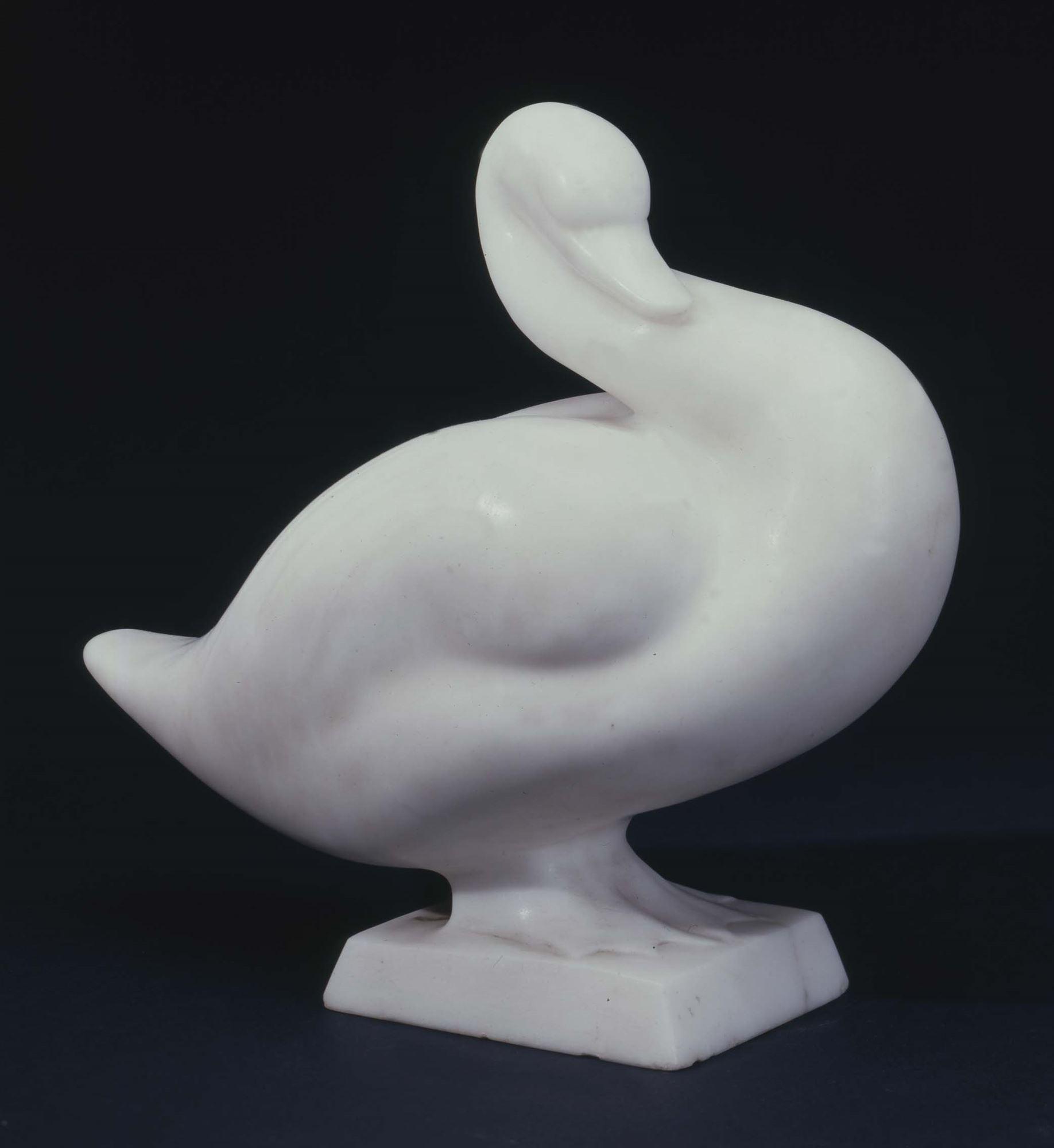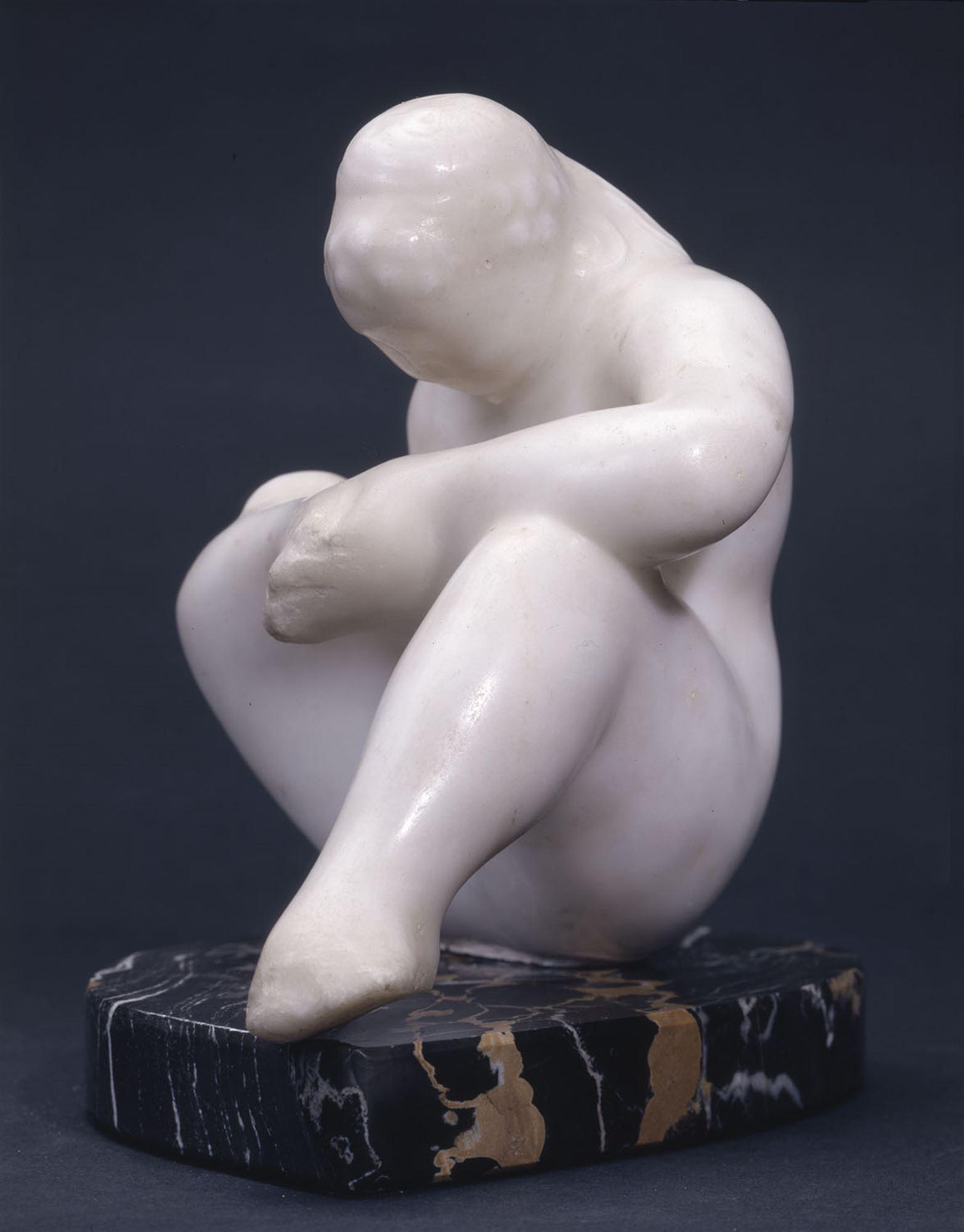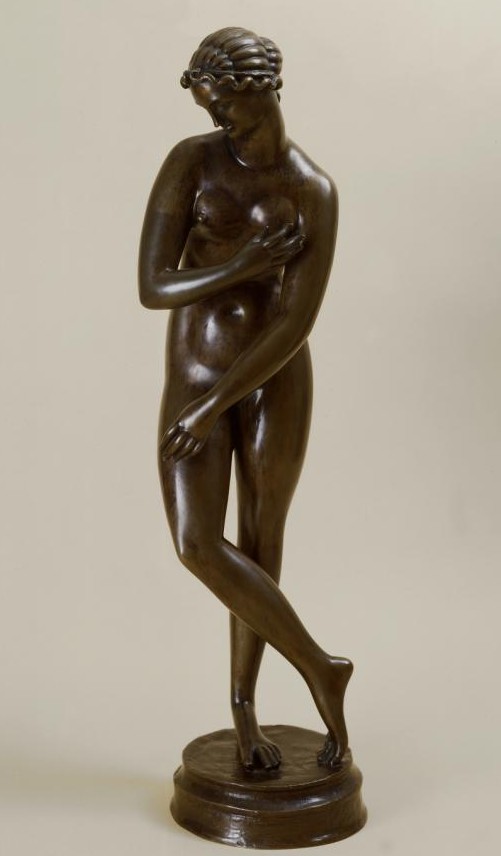After studying at the Warsaw Art Academy, Nadelman moved to Berlin and then Paris. His years in Paris, 1906-1914, were brilliant with successful exhibitions, established patronage and critical acclaim. Nadelman was visited, befriended and admired by the leading modern artists including Picasso, Brancusi and Modigliani. He was patronized and reviewed by the Parisian avant-garde: Leo and Gertrude Stein, André Gide, Apollinaire and the Natanson brothers.
The entire exhibition of his sculpture at Paterson’s Gallery in London in 1911 was purchased by Helena Rubenstein the cosmetics queen and patron of modem art who continued to commission him to sculpt figures and reliefs for her London house. A second one-man exhibition in Paris and his representation in the 1913 Armory Show in New York cemented Nadelman’s international reputation.
Assisted by Helena Rubenstein, the sculptor was able to obtain passage to the United States at the outbreak of the first world war and to set up a studio to prepare for his first New York show. Nadelman was already known in the United States, from his participation in the Armory Show, his advancement by the art historian Bernard Berenson, and the publication of his drawings and statements by Alfred Stieglitz in Camera Work. Nadelman’s 1917 New York exhibition was a major success, establishing the sculptor as an important artist in his new country. Nadelman adapted to the New York artistic life admirably, he became a member of the Penguin Club and was part of the Stettheimer family circle. He associated with other established American sculptors (Barnard, McCartan, MacMonnies, Manship, Mahonri Young and Gertrude Vanderbilt Whitney) and was close to George Bellows, Eugene Speicher and Gari Melchers. As in Paris, he maintained relationships with his socially prominent patrons which often isolated him from the artistic community.
His artistic vision from 1917-29 was altered and enriched by the American scene. He now carved figures in cherrywood, with additions of gesso and wash to indicate features and costume. His subjects were derived from the daily life he observed, from society, the theater, the concert hall, vaudeville and the circus. The works no longer refer to antiquity but were inspired by Seurat with echoes of American folk art. The public disliked these clothed contemporary figures, assuming them to be parodies of themselves. These sculptures are now considered Nadelman’s most outstanding achievement and among the most original bodies of sculpted works in America.
Nadelman’s achievement as a sculptor should not be measured by his influence on others or defined by his position within the modern movement. His was a personal realization never focusing on one source, working material, or style. Nadelman combined his aristocratic vision, intellectual and often witty, with a contemporary idiom and a masterly technique to produce individual and important sculpture.







